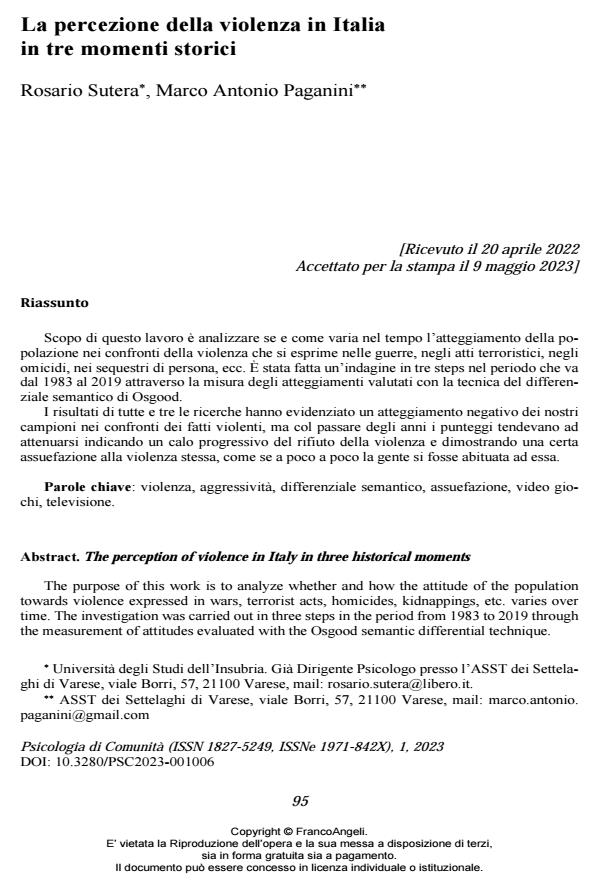The perception of violence in Italy in three historical moments
Journal title PSICOLOGIA DI COMUNITA’
Author/s Rosario Sutera, Marco Antonio Paganini
Publishing Year 2023 Issue 2023/1
Language Italian Pages 18 P. 95-112 File size 741 KB
DOI 10.3280/PSC2023-001006
DOI is like a bar code for intellectual property: to have more infomation
click here
Below, you can see the article first page
If you want to buy this article in PDF format, you can do it, following the instructions to buy download credits

FrancoAngeli is member of Publishers International Linking Association, Inc (PILA), a not-for-profit association which run the CrossRef service enabling links to and from online scholarly content.
The purpose of this work is to analyze whether and how the attitude of the population to-wards violence expressed in wars, terrorist acts, homicides, kidnappings, etc. varies over time. The investigation was carried out in three steps in the period from 1983 to 2019 through the measurement of attitudes evaluated with the Osgood semantic differential technique. The results of all three research highlighted a negative attitude of our samples towards violent acts, but over the years the scores tended to diminish, indicating a progressive decline in the refusal of violence and demonstrating a certain habituation to the violence itself, as if little by little people got used to it.
Keywords: violence, aggressiveness, semantic differential, addiction, video games, television.
Rosario Sutera, Marco Antonio Paganini, La percezione della violenza in Italia in tre momenti storici in "PSICOLOGIA DI COMUNITA’" 1/2023, pp 95-112, DOI: 10.3280/PSC2023-001006